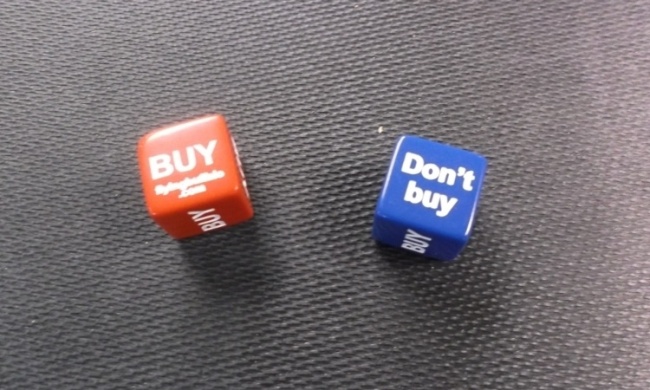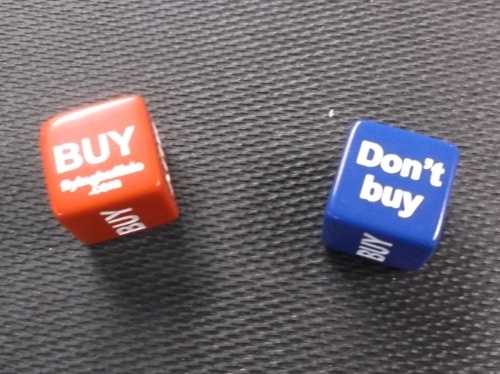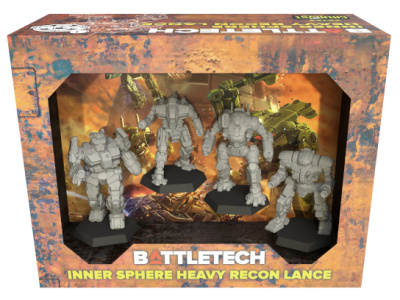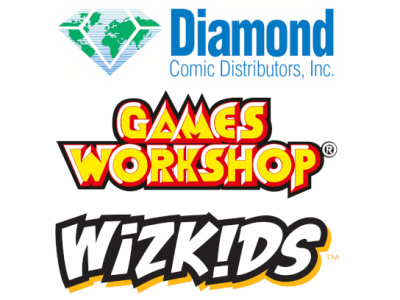Rolling for Initiative is a weekly column by Scott Thorne, PhD, owner of Castle Perilous Games & Books in Carbondale, Illinois and instructor in marketing at Southeast Missouri State University. This week, Thorne takes look at the consumer decision making process.
Since I have had a few people comment they enjoy the marketing stuff I write about, I thought I would revisit the consumer decision making process. You, me, customers, everybody in fact, goes through some version of this five step process. There are common exceptions which will be looked at after the basic process is outlined:
1. Problem Recognition--This is a short-handed term for any situation in which the consumer realizes they lack something or need to make a decision. This could range from deciding whether to get up, realizing they are hungry, bored, need money or suddenly develop a problem with their car, roof, clothing, etc. A situation has developed and must be addressed. For the purposes of this illustration, I assume the problem that has developed boredom and wanting a new game to play.
2. Information Search--The consumer starts to look for information to help them make the decision to solve the problem recognized in step 1. If the consumer knows little about the problem, they will search for external information regarding it from sources such as friends, books, the Internet. In order to find out more about various boardgames, they might look up reviews or find videos showing game play. They might also ask friends about the game or find a store that deals in the game to ask questions about it to help them make the decision. If the consumer is experienced in the area under consideration, as in they played lots of boardgames and know what type of games they like, they will rely more heavily on internal information, such as their memories of playing games with friends and what types of games they and their friends enjoyed or didn’t enjoy.
3. Evaluation of Alternatives--In this step, the consumer considers the choices they have discovered during the information search. During this step, they may apply heuristics, or decision rules, to their choice of alternatives. For example, if they feel they do not have a lot of free time or like games that play quickly, they would apply the heuristics of "Must not take up a lot of time" and "Must play quickly" to their alternatives and would eliminate choices that did not meet those criteria.
4. Decision--During this stage the customer makes their decision, eliminating other alternatives based on the heuristics they feel most applicable to the optimal choice. For example, if they want a game that "Must not take up a lot of time" but also want one that "Many of my friends play" and "Must play quickly," they will decide during this stage which of these rules are more important and will chose the alterative that satisfies the greatest number of them.
5. Post Purchase Behavior-- In this stage, the consumer seeks confirmation that they made the right decision. In the case of our boardgame player, they might seek it by asking about events at the store or contacting their friends to see about playing a game. If they play and do not enjoy it, they will likely decide they made the wrong decision and choose not to play that game anymore or maybe not any more games from the same company or designer. If they play and have fun, they will likely believe they made the correct decision and continue to play and look for more games from the same company the next time.
Extended Decision Making--This contains all of the steps above. The consumer will go through each of them and spend quite a bit of time on steps 2 and 3. It is generally used when the consumer is making a major decision, such as buying a car, a house, choosing which college to attend, etc. that will have an extensive effect on the course of their life or when they are making a first decision in an area in which they have no experience. External information is used extensively.
Limited Decision Making--This also contains all of the steps above but is used when the consumer has more experience in the area and the decision is not as important, such as where to go to eat, which movie to see or what boardgame to purchase. Heuristics and evoked sets are referred to on a regular basis. An evoked set is a set of options that the consumer already knows they want to select from or avoid. If a customer plays TCGs, the evoked set of games the consumer would choose from might be Magic: The Gathering and Force of Will. The consumer would automatically exclude any games outside of those choices.
Routine Decision Making--This form of decision making is used when the consumer is highly familiar with the selections and makes the same decision on a regular basis. For example, always ordering from the same pizza place or getting coffee from Starbucks on the way to work. The "Marvel Zombie" was a customer using routine decision making, as is the Magic player who always orders a booster box of the new set. Many of the characters in John Kovalic’s Dork Tower or Jolly Blackburn’s Knights of the Dinner Table use routine decision making when purchasing games ("It must be mine.")
You, and your customers, whether you are a manufacturer, publisher, distributor or retailer, make decisions on a daily, even hourly basis. I’m hoping this gives you some insight into how you make them. Business decisions follow the same process but with some additional factors and I will look at those next week.
The opinions expressed in this column are solely those of the writer, and do not necessarily reflect the views of the editorial staff of ICv2.com.

Column by Scott Thorne
Posted by Scott Thorne on October 10, 2016 @ 4:44 am CT
MORE GAMES
'Inner Sphere Pursuit Lance'
May 21, 2025
Catalyst Game Labs will release Inner Sphere Pursuit Lance, a new ForcePack for BattleTech.
With Saga Alliance and HEO
May 21, 2025
Renegade Game Studios has made moves to expand its distribution in Europe through new strategic relationships with Saga Alliance and HEO GmbH.
MORE COLUMNS
Column by Rob Salkowitz
May 20, 2025
This week, columnist Rob Salkowitz posits a new way for small comic publishers to get trade distribution, and for retailers to access short-run products.
Column by Scott Thorne
May 19, 2025
This week, columnist Scott Thorne comments on the closing of the Diamond Comic Distributors sale, on new developments in the Games Workshop lawsuit, and congratulates Mike Webb.








